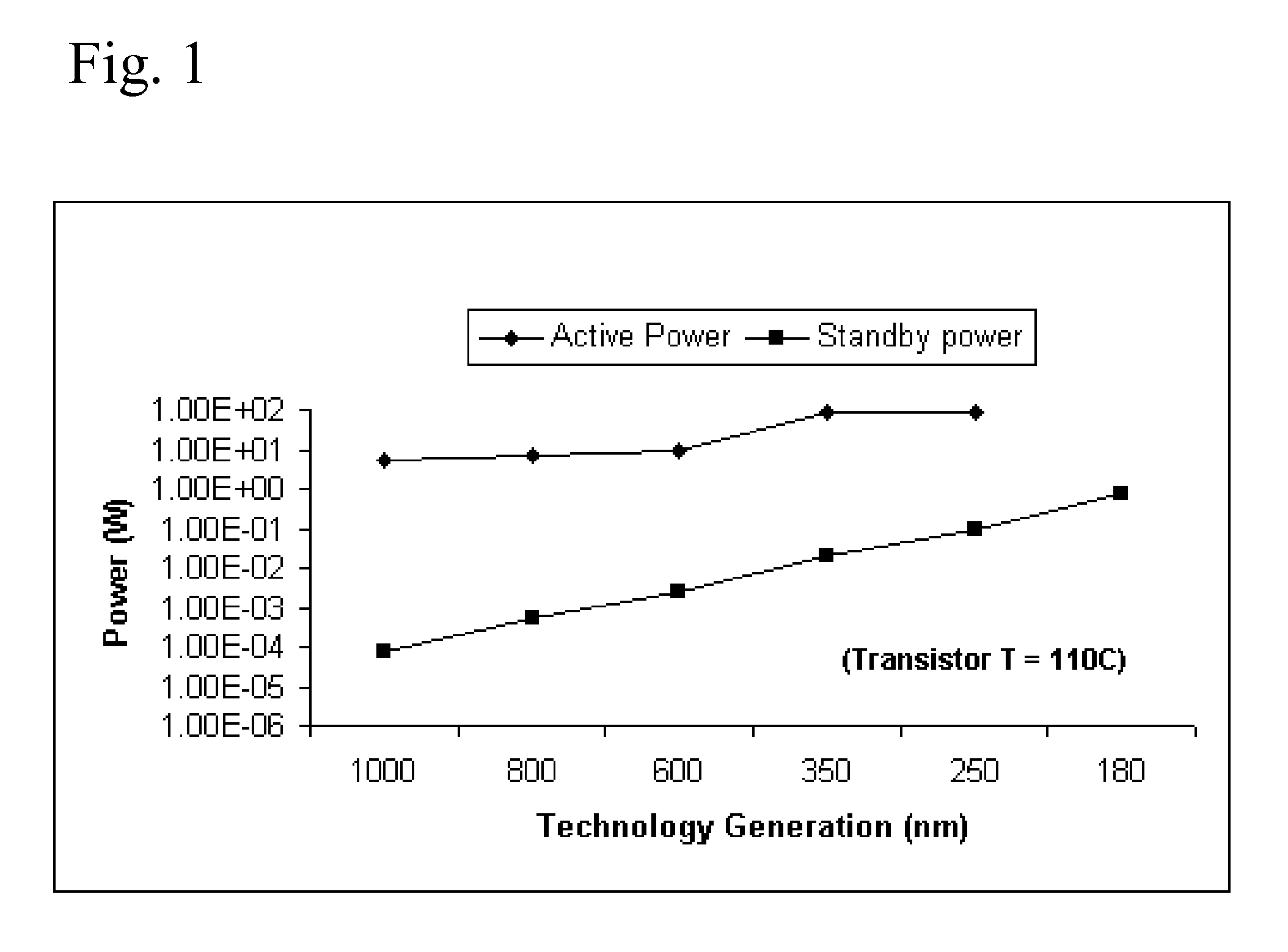A Method and Apparatus for Reducing Leakage in Integrated Circuits
- Summary
- Abstract
- Description
- Claims
- Application Information
AI Technical Summary
Benefits of technology
Problems solved by technology
Method used
Image
Examples
Embodiment Construction
[0049] For short channel MOSFETs, the leakage current calculation is not straightforward due to the highly nonlinear behavior of the drain current of the device with respect to source / drain voltages. The present invention uses the Berkeley Short-Channel IGFET (BSIM) Predictive Technology Model to estimate the leakage power dissipation, as it fits well with HSPICE simulations. In the BSIM model, the threshold voltage (Vt)is expressed as in FIG. 2 (1), where VFB is the flat-band voltage, φs is twice the Fermi potential, k1 and k2 represent the non-uniform doping effect and η models the drain induced barrier lowering (DIBL) effect, an undesirable punch through / current flowing between the source and drain below the surface of the channel. The leakage current for NMOS transistors operating in weak-inversion region (i.e.=0) is given by FIG. 2 (2), where VT is the thermal voltage and is given by q / kT, n is the sub-threshold slope coefficient, and I0 is given by equation (3) of FIG. 3. As s...
PUM
 Login to View More
Login to View More Abstract
Description
Claims
Application Information
 Login to View More
Login to View More - R&D
- Intellectual Property
- Life Sciences
- Materials
- Tech Scout
- Unparalleled Data Quality
- Higher Quality Content
- 60% Fewer Hallucinations
Browse by: Latest US Patents, China's latest patents, Technical Efficacy Thesaurus, Application Domain, Technology Topic, Popular Technical Reports.
© 2025 PatSnap. All rights reserved.Legal|Privacy policy|Modern Slavery Act Transparency Statement|Sitemap|About US| Contact US: help@patsnap.com



